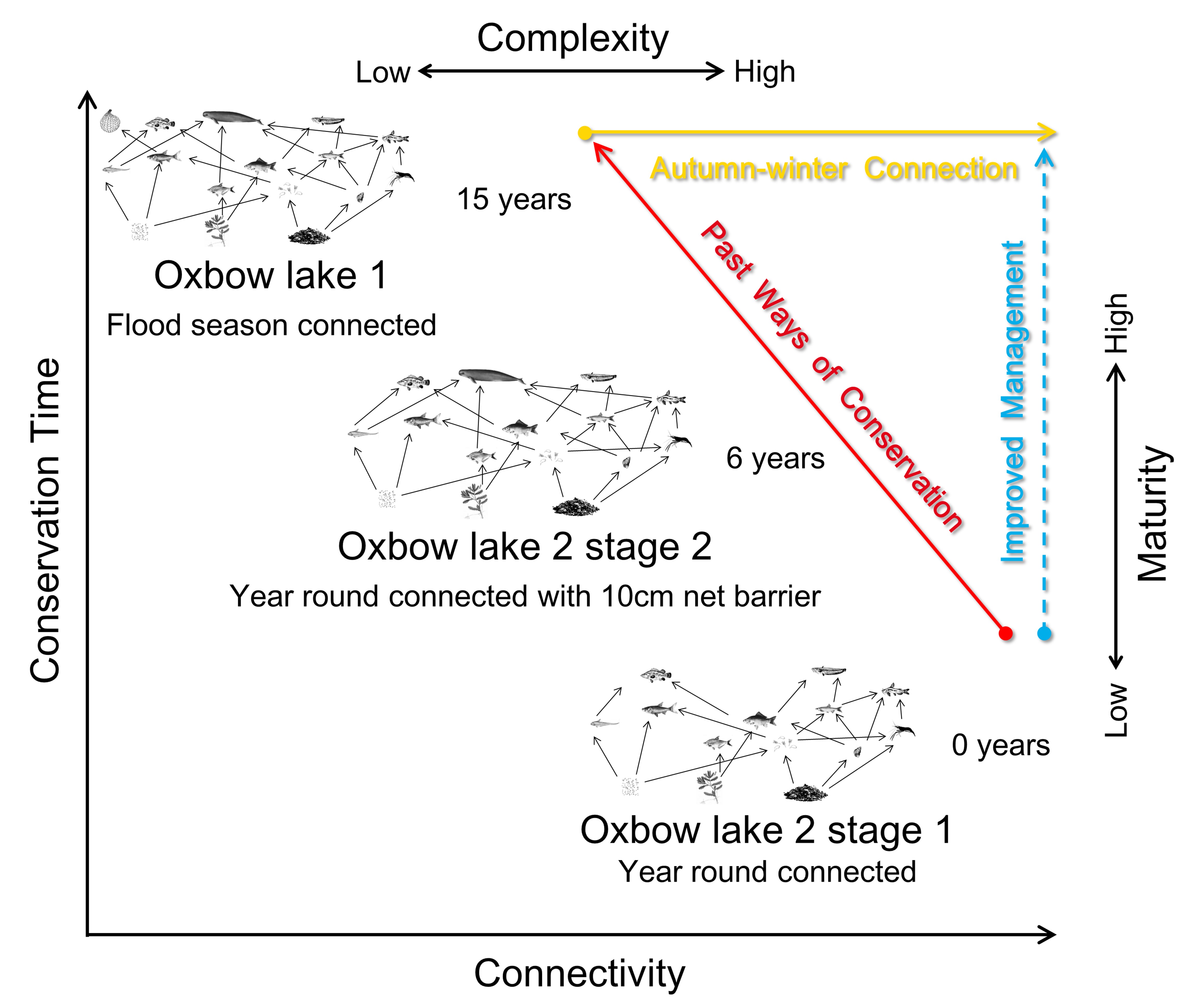Highlights
Researchers Suggest Need to Shift in River-lake Connection Scheme Under “Ten-year Fishing Ban” in the Yangtze
The freshwater river and lake system supports high biodiversity and various ecosystem services, making it one of the most valuable ecosystems in the world. However, human activities, such as river-lake isolation and overfishing, have posed great challenges to its health and sustainable development.
In the Yangtze basin, seasonal connection strategies, including filling water and accommodating fries, have been implemented for the purposes of flood control, biodiversity protection and water improvement. The Yangtze River and its related lakes have been under a "ten-year fishing ban" since January 2020. Nevertheless, quantitative studies on how the structure and function of lake ecosystems respond to these management measures are still lacking.
Recently, researchers led by Prof. WANG Kexiong and Prof. XU Jun from the Institute of Hydrobiology (IHB) of the Chinese Academy of Sciences revealed the risk of food web simplification and biodiversity decline in sluice-controlled lakes during the fishing ban, and suggested to restore the fish migration by improving the connectivity in autumn and winter, so as to enhance the effectiveness of the “ten-year fishing ban”. This study was published in Ecological Indicators.
In this study, the researchers selected two oxbow lakes (Tian-e-zhou and He-wang-miao) for comparative study. The lakes located in the Jing Jiang section of the middle reaches of Yangtze River, and were only 67km apart and highly similar in climate and biome. They both introduced Yangtze Finless Porpoise for ex-situ conservation, but their management modes varied.
Firstly, the researchers compared the aquatic ecosystems of the two oxbow lakes in Ecopath. The results showed that, the flood-season-connected and longest-protected Tian-e-zhou system was more developed, but it had a shorter energy path length and lower community evenness.
The researchers also found that after the fishing ban, the biomass of adult migratory fish, such as Silver Carp, Bighead Carp, Grass Carp, Bream, increased greatly in the year-round connected He-wang-miao system. The ecosystem structure was also simplified, similar to Tian-e-zhou. The reason could be that the 10 cm mesh net at the lower mouth allowed small fish to flow in but restricted large fish from wintering out, which is similar to the effect of seasonal connection of sluice-controlled lakes.
To find a solution to such food web simplification, the researchers conducted trophodynamic simulations in Ecosim. The results indicated that, the maturity and complexity could be improved simultaneously when large individuals of river-lake migratory fish were removed from the system. Hence, increasing autumn-winter connectivity and driving large river-lake migratory fish back to the main stream may mitigate the risk of food web simplification.
These findings make new complements to seasonal connecting methods and may enhance the effectiveness of the “ten-year fishing ban” in Yangtze River and benefit the conservation of floodplain lakes worldwide.

Properties of ecosystem structure under different management modes and future management suggestions (Image by IHB)
(Editor: MA Yun)